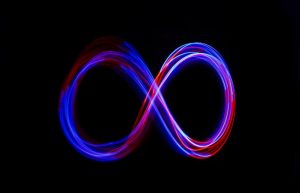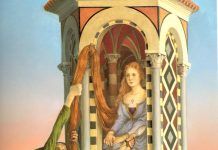There are far, far better things ahead than any we leave behind.(C. S. Lewis)
There have been many lessons that COVI-19 has, and still is, teaching us. The obvious of course is the unpredictability and fragility of life. We are not and will never be in full control over every aspect of our lives. Mother nature and her penchant for causing chaos and destruction will see to that, whether it’s hurricanes, tornadoes, earthquakes, droughts, or yes, COVID-19, or whatever viral concoction it can birth, along with a little help from laboratories.
Unfortunately, as we push the boundaries of science, it pushes back, sometimes violently, thus preserving Newton’s Third Law of Motion.
I am beginning to suspect the real lay of the land is something even darker: the fear of death. Of course, any rational modern society is going to do its best to reduce mortality; it’s in our genetic nature to survive and pass on our chromosomes, our one weapon to subdue the beast that best us all.
And of course, death is an incredibly painful experience for those left behind, who search for ways to fill the emotional void that permanent departures bring. Still, draw the curtains back a little more and we have to wonder if our fear of death is on some level, ironically killing us before we die.
Most people are unaware that they are unconsciously battling the fear of death, which lays buried under a mountain of other petty anxieties and fears that consume us while simultaneously shielding the bigger terror within. As existential psychologists Victor Florian and Mario Mikulincer (2004) rightly observed, “The paralyzing terror produced by the awareness of one’s mortality leads to the denial of death awareness and the repression of death-related thoughts.”
There is a real cost for waging a battle against our fear of death. As it eats away at peace of mind, people become anxious and depressed. Nearly 17% of our population, that’s 1 in 6 people, take anti-depressants in the United States. In fact, according to Harvard Medical School, “the rate of antidepressant use in this country among teens and adults (people ages 12 and older) increased by almost 400% between 1988–1994 and 2005–2008.”
The pandemic has only exacerbated this dynamic. As the Journal of the American Medical Association (JAMA) reports, “depression symptom prevalence was more than 3-fold higher during the COVID-19 pandemic than before.” Of course, there are many stressors beyond the fear of death, such as isolation, adjustments to works schedules, and losing employment, along with the resultant economic burdens. But it’s likely that underneath this patina lurks our fear of death.
The fear of death also plays out at the sociological level, tapping into our baser nature. As reported in Psychology Today, “In one experiment, after subjects were subliminally presented with the word “death,” they more strongly endorsed the worldview of their own ethnic group or nation while, at the same time, they denigrated members of other groups whose worldviews differed from their own.” Another study revealed our fear of death “increases support for violent solutions to conflict.”
The COVID-19 pandemic has also exposed how easily we will compromise long-held suppositions about freedom. We willingly gave up our freedom to move and to congregate, and while it was probably the right thing to do, it was not without consequences.
A recent article by Harvard University found “Many young people who reported serious loneliness also said they felt as if no one ‘genuinely cared’ about them.” In fact, researchers found that “36 percent of respondents to a national survey of approximately 950 Americans reported feeling lonely “frequently” or “almost all the time or all the time.”
Technological advancements in the medical field have only complicated the matter. We are simply living longer, which is emblematic of our fight against not only disease and suffering, but also indicative of our fear of death. Recent data shows, “most babies born in 1900 never made it past 50, while today’s leading country (Japan) boasts an average life expectancy of 83, with expectancies of 81 and above for many developed countries.”
But again, there is a price to pay for this extension, because with more years comes the increased likelihood of chronic disease and the stresses and indignities associated with this state of being. Haider Warraich, a fellow in cardiology at Duke University Medical Center, frames it this way:
“Now, with new technologies, what happens is we are able to help people through those potentially fatal episodes. But what happens is that now, people live longer, but with more chronic diseases. And especially closer to the end of life, many patients have multiple chronic diseases that we can at best manage, but that we can’t cure. They’re in and out of the hospitals. In some ways, dying has become a phase of our life, instead of being just an instantaneous sort of flash event.”
If you have ever watched a loved one whiter away to nothingness, then you know what I mean. Everyone acts differently, of course. My mother had begun to wish for death towards the end of her time on earth; she no longer found joy in her world of dependence, fragility, and isolation. My father, on the other hand, was in some form of denial even just days before he passed, asking for some time of medical intervention that would delay the inevitable.
However, there are subtler, more psychic costs to pay as a result of our fear of death, leading to a form of “death anxiety,” a state characterized by a constant sense of apprehension caused by an inordinate fear of death. Clinical psychologist Robert Firestone writes:
“When their death anxiety is aroused, people tend to become increasingly defensive in ways that are harmful to themselves and often to others as well. As they deny death to protect themselves, they lose perspective, giving importance to insignificant issues in their lives while failing to value other relevant and meaningful influences. Many people tend to live life as though they will never die and can afford to squander their most valuable experiences.”
In this sense, we have transmuted death from an inevitable fact of the cycle of life, of a motivating force that compels us to accomplish, grow, and make a difference, to a state of neurotic exhaustion, ironically tainting, or even gobbling up the few precious moments we actually have.

Source: feng-shui.lovetoknow.com
But perhaps there is wisdom to guide us through this thorny field. It’s as simple as a belief in some form of afterlife, a mystical force composed of energy that sustains us in some manner on the other side. In short, we need a sense of immortality, a faith in a greater power that universally endures. As the eminent Carl Jung said,
To this end he ought to have a myth about death, for reason shows him nothing but the dark pit into which he is descending. Myth, however, can conjure up other images for him, helpful and enriching pictures of life in the land of the dead. If he believes in them, or greats them with some measure of credence, he is being just as right or just as wrong as someone who does not believe in them.
But while the man who despairs marches toward nothingness, the one who has placed his faith in the archetype follows the tracks of life and lives right into his death. Both, to be sure, remain in uncertainty, but the one lives against his instincts, the other with them.
I have an all-too-real example that informs me: My mother believed in an afterlife; my father did not.
Perhaps the greatest example, however, is Christ himself, who achieved immortality when he defeated death as he completed his permutation from flesh and bone into the spirit: “For as by a man came death, by a man has come also the resurrection of the dead” (1 Corinthians 15:21).
In this most heroic of all acts, Christ turned darkness into light, as the Son became the Sun, a source of eternal illumination. Similarly, Buddha hit upon these dynamics, proffering, “Make yourself a light. The body was born from parents and was nourished by food; just as inevitable are sickness and death. But the true Buddha is not a human body: it is Enlightenment. A human body must die, but the Wisdom of Enlightenment will exist forever in truth and in practice….”
At the end of our days, it is comforting to know that this life we live, no matter how precious, is temporary, but the Universe endures, God triumphs over death and gives us eternity as a reward for our suffering. The Native American tribe, the Blackfoot, made the following observation: “What is life? It is the flash of a firefly in the night. It is the breath of a buffalo in the wintertime. It is the little shadow which runs across the grass and loses itself in the sunset.”
That sunset is the light at the end of the proverbial tunnel. It holds the promise of eternity and connectedness, but we have to have some faith in the here and now, even as we wander in the darkness.






